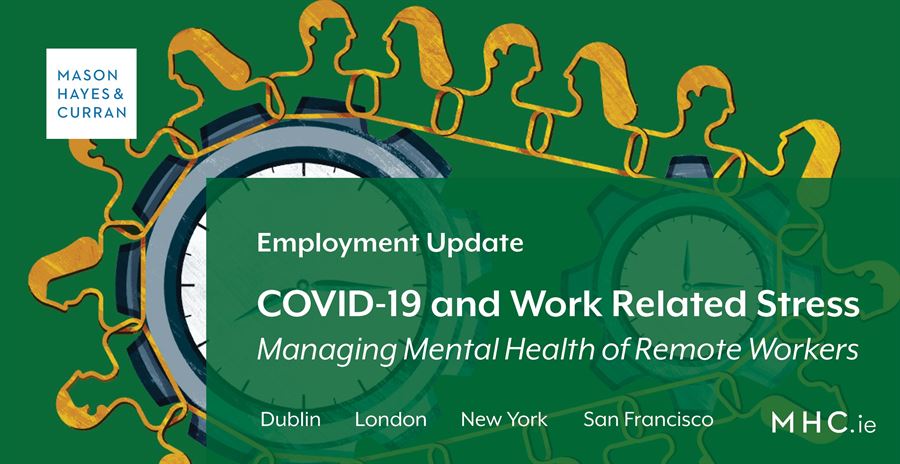
Research commissioned by LinkedIn has given insight into the current working conditions of employees working remotely in Ireland due to Covid-19. The research found that 56% of respondents reported feeling more anxious or stressed than they did before the lockdown was introduced while respondents also reported working an extra 38 hours per month on average – essentially an additional working week.
The current situation is particularly affecting younger workers with 70% of respondents under 24 and 63% of respondents between 24 and 34 saying they fell anxious or stressed as a result of working from home. Some of the factors being reported as causing this stress include:
-
Feeling under pressure to answer emails and calls quicker than usual or be visible online while they are remote working as they are concerned about losing their jobs
-
The affect the lockdown is having on their ability to focus
-
Getting easily distracted by their home environment
-
The merger of their home and work environments resulting in an inability to switch off
The Government’s “Roadmap for reopening society and business” recommends that offices don’t reopen until phase 5 of the plan which commences on 10 August 2020 and even then it recommends that “Remote working continues for all workers or businesses that can do so.” Twitter have already announced that their staff are now entitled to work at home “forever” if they want to while 83% of employees have indicated that they would like to keep working from home after the restrictions eased. So with remote working here for the foreseeable future, we look at some of the key factors for employers to consider in terms of managing their employees Health and Safety while they are working remotely.
Health and safety of remote workers
Section 2(1) of the Safety, Health and Welfare at Work Act 2005 (“the Act”) defines “place of work” as including:
“any, or any part of any, place (whether or not within or forming part of a building or structure), land or other location at, in, upon or near which, work is carried on whether occasionally or otherwise…”
Employers have a duty under S.8 of the Act to ensure a safe place of work for employees and according to the Health and Safety Authority:
“An employer has the same responsibility for the safety and health of employees who work from home as for any other employees.”
Part of this duty is an obligation on the employer to assess the employees working environment for systems and practices leading to health and safety hazards – including stress.
Your workplace assessment
Ideally speaking, workplace assessments, whether in the home or in the office, should be conducted by a health and safety consultant, but this is not possible in the current environment. Accordingly, a self-assessment questionnaire is the practical choice and this should be created and issued to all employees working remotely with an obligation on them to complete and return it by a set date.
The assessment should cover the usual practical issues, including:
-
Work environment, including space, lighting, ventilation, safe access, free from cables/trip hazards
-
Work equipment, including provision of laptops, monitor, keyboard, proper seating etc. and ergonomic set up of same
But it should also include the following headings covering employees wellbeing:
-
Communication – ensuring regular communication with remote workers including regular one-to-one calls to ensure open lines of communication. This addresses instances in which staff may feel isolated, fatigued or stressed, so it’s important to allow them opportunities to alert you to same
-
Supervision – ensure employees have clear role clarification and know what is expected of them
-
Work-life balance – ensure employees take regular breaks and are encouraged to practice healthy work practices such as getting regular exercise, getting outdoors regularly and not eating at their workstation
Conclusion
The current situation of remote working will be ongoing for the foreseeable future and is possibly the beginning of a sea change to a remote working model of employment. Research is indicating that employees are beginning to feel stressed due to their current working conditions so it is important for employers to conduct a risk assessment in line with their duties under the Health and Safety Acts.
If you would like to discuss the health and safety implications of the COVID-19 crisis on your business, please contact a member of our Employment & Benefits team.
The content of this article is provided for information purposes only and does not constitute legal or other advice.





